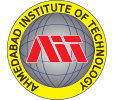Introduction to Free-space optical communication(FSO)
Introduction:
Free-space optical communication (FSO) is an optical communication technology that uses light propagating in free space to wirelessly transmit data for telecommunications or computer networking. "Free space" means air, outer space, vacuum, or something similar. This contrasts with using solids such as optical fiber cable or an optical transmission line. The technology is useful where the physical connections are impractical due to high costs or other considerations.
History:
-
In the late nineteenth century, Alexander Graham Bell's “phone-phone”.
-
In 1960 severalscientists theorised and developed laser.
-
In mid 1960's NASA initiated experimeted to utilize laser as a mean of Communication between the Goddard space Flight center and Gemini-7.
-
In 1980's United States and its military Research.
-
Germany,France and Japan made significantadvancements in free space Optics for satelite Communication.
Uses:
-
To cross theroad or other bariiers which the sender and receiver do not own.
-
For communication between spacecraft.
-
Speedy service delivery of high-bandwidth access to optical fiber networks.
How It Works ?
-
It is based on connectivity between FSO based optical wireless units.
Each consisting of an optical transceiver to provide full duplex capabilities.
Advantages:
-
Licence-free Operation.
-
High bit rates.
-
law bit-error rates.
-
Security.
-
Easiness and speed of installation.
-
Ease of deployment
-
Can be used to power devices
-
License-free long-range operation (in contrast with radio communication) .
-
High bit rates
-
Immunity to electromagnetic interference
-
Full duplex operation
-
Protocol transparency
-
Increased security when working with narrow beam(s)[citation needed]
-
No Fresnel zone necessary
Disadvantages:
-
Beam dispersion.
-
Atmospheric absorption.
-
Rain,snow,fog.
-
Background ligh.
FSO Subsystems:
-
Transmitter.
-
Receiver
-
Tracking System.
Applications:
1) Point to Point FSO System:
Disadvantages:
-
Can not connectmore than 2 points.
-
The points can not havearbitary distance between them.
-
Has the poorest network and traffic protection.
2) Mesh FSO System:
Advantages:
-
Very High data rates.
-
Scalability
-
Expandability.
-
The best network and service protection.
Disadvantages:
-
High Cost
-
The complexity of each node in mesh topology.
3) Mesh FSO Systems.
Advantages:
-
very high data rates.
-
scalability and expandability.
-
The best network and service protection.
Disadvantages:
-
High cost
-
The complexity of each node in mesh topology.
Feature Of Free Space Optics:
4) FSO and HAPS(Featured Application) :
-
Use on highaltitude Plateform(HAPs),(20-30Km).
-
Estimated Range(more than 600km).
Advantages:
-
Stratospheric conditions: Low attenuation,no cloud interferences,low tempreture,etc.
-
Cost Effective
References:
www.fsona.com
www.freespaceoptics.com
Wikipedia.
www.electronicsform.com



